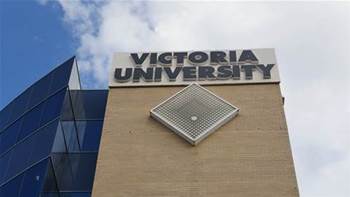The latest academic results from Victoria University suggest the institution’s radical (and at times controversial) ‘Block Model’ has successfully integrated with remote teaching initiatives during the COVID-19 pandemic.
Students at the university only take one course at a time during an intensified and condensed period known as block, as opposed to the de facto practice of running courses concurrently over the course of a semester.
Block Model critics questions whether the blocks are too short to consolidate a course's knowledge and synthesise it with content from other courses, but it proponents point to an improvement in student numbers and results at Victoria University as proof of the method's efficacy.
The university recently invested considerable time and effort ensuring content and its delivery (both in class and online) were we up to the challenge of the new delivery method, and overhauled its digital learning management system to support students through the changes.
Figures from VU suggest that students took the abrupt switch to online learning well, with their performance for the second block of semester one (spanning the lockdown-ridden month of April) marginally improving at the top end of the spectrum, with fewer recorded instances of dropouts or failures overall.
Data from Block 2, 2020 compared to Block 2 in 2019 (for all Melbourne students) show:
• 25.0 percent of students achieved high distinctions, compared with 24.7 percent in 2019;
• 26.3 percent of students achieved distinctions, compared with 27.8 percent in 2019;
• 18.8 percent of students achieved credits, compared with 21.1 percent in 2019;
• 8.0 percent of students achieved a pass, compared with 10.9 percent in 2019; and
• 9.8 percent of students failed/withdrew, compared with 11.6 percent in 2019.
Given the disruption to the overall tertiary sector that has resulted in some student associations calling for refunds due to the lowered quality of teaching as universities went largely online, vice-chancellor Professor Peter Dawkins is hailing Victoria University’s results as a success for the Block Model.
“Students at VU are continuing to perform well both on and off-campus and have adapted successfully to the transition to flexible and remote learning, which is shown through this testing period,” Dawkins said.
“The results also reflect the commitment of our teaching staff who have undergone rapid and significant professional development to ensure teaching quality as well as successful student engagement and outcomes through innovative learning strategies.”
It’s worth noting, however, that students at most other universities are yet to complete their studies for the semester or trimester - a period of time that spans back to before isolation and video conferences became the norm for large swathes of society.
One thing many other universities are also having to come to terms with is a higher rate of students dropping courses, either due to dissatisfaction with remote delivery or other COVID-19 related causes.
While VU hasn’t broken out which students failed versus how many dropped out, the numbers are better than this time last year.
It’s also experienced a strong increase in the number of students enrolled for Block 3, a rise of 20 percent compared to 2019, which may be partly attributed to the growing number of unemployed people seeking to retrain or upskill in the wake of mass lay-offs.


























